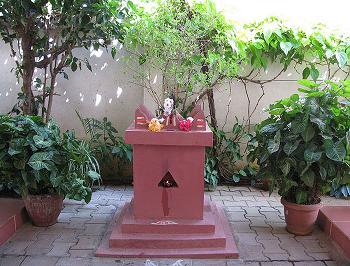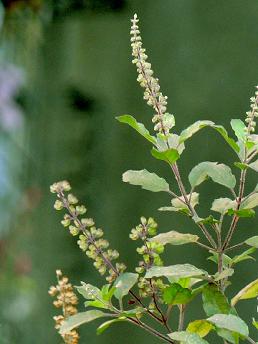- Tulsi Vivaha is celebrated on Kartik Dwadashi – A day after the Prabodhini Ekadash. The winter wedding season in India is inaugurated with Lord Krishna’s marriage with the sacred Tulsi plant, a symbol of Rukmini’s devotion and love for him!
The week in which India celebrates Diwali is truly hectic and busy. With poojas and fireworks, sweets galore and family gatherings, time flies before one knows and soon, there are quieter days. With Diwali, the colourful festival season of the year comes to an end and there is a hiatus before the New Year brings its procession of festivals once again.
Indeed, with Kartik Ekadashi, the holy Chaturmas (four holy months) of major Indian festivals comes to an end – and it is significant that these four months are the Monsoon months of India when harvests are planted and reaped in the mild, sunny weather. Perhaps Chartumas is a concept unique to an agricultural economy like India, a country totally dependent on the Monsoon rains for its agriculture and commerce. Even the literature, poetry, art, dance and music of India celebrate the Monsoon as the life giver of India.
It is interesting to know that Chaturmas (four holy months) begins with Devashayani Ekadashi or Ashadh Ekadashi when Lord Vishnu begins a period of rest after providing the earth with plentitude of agricultural produce and greening the earth. Four months later comes Kartik Ekadashi, which is called Prabodhini Ekadashi because Lord Vishnu wakes up to take charge of the world again after having rested for four months.
The day after this Ekadashi, comes the beautiful festival of Tulsi Vivaha which is symbolic of India’s love and respect for plants and trees, even those that grow wild. Tulsi is a plant that grows in the wild and is cultivated only because it is a part of worship rituals for Vishnu or Krishna. It is sacred to all Indians and is called the Holy Basil by Western societies. It has many medicinal qualities too.
Why is it considered holy?
There are several traditions about this belief. But one that is relevant today and is touching to the heart concerns Lord Krishna’s love story with his consort Rukmini! It is said that when Krishna’s ‘work and duties’ on this earth were done, he was invited by all the gods to return to Devlok, the abode of divine beings. When he was gone, both his wives Satyabhama and Rukmini (Lakshmi) missed him and requested Muni Narada to bring him back! Narada said that Krishna would return only if either of them could outweigh him and offer something heavier than him to the gods. Satyabhama, arrogant and proud of her looks and riches, agreed instantly. Krishna was brought to the earth and asked to sit in one pan of a specially set up weighing scale (Tula) and Satyabhama quickly began to pile the other pan with her wonderful gems and gold and silverware. As she put more and more jewels, the pan in which Krishna was seated weighed heavier and heavier. The arrogant Satyabhama gave up in the end and retired to her palace.
Rukmini – an incarnation of Lakshmi – came forward, plucked a sprig from the Tulsi plant growing nearby and put it in the pan emptied by Satyabhama, saying, “With all my love and devotion, I weigh this Tulsi sprig against you.” In an instant, the pan dropped, showing that the Tulsi leaves were heavier than Krishna!
Since then, Tulsi leaves are a symbol of love and devotion and are loved by Krishna or Vishnu (Vithala) and offered to him in every ritual. Every Kartik Dwadashi, Krishna and Tulsi are married in ceremonial pomp and splendor! Their wedding starts the winter wedding season of India. Tulsi and Krishna are offered the produce of the season – namely sugarcane, tamarind, amlas and various berries. The markets are full of winter fruits and berries in this season. In fact, sugarcane is used for building the wedding mandap for the divine couple.
What is even more interesting is that in the wedding of any Hindu couple, the father of the bride offers her hand to the bridegroom with a Tulsi leaf placed on it to make it ‘permanent and auspicious’. Putting a Tulsi leaf on any gift makes it final and complete with good wishes. Thus, the saying “Tulsi patra rakh ke diya’ means that the giver has no claim to the gift any longer and that it is given with good wishes! It also signifies the giver’s sense of detachment from whatever is given – an object, a promise, a relationship or even a claim!
Author was Editor of Femina for 25 years. Vimla Patil is among India's senior most Journalists-Media persons.
To read another article on significance of Tulsi Vivah by Suhas click here
 Tulsi Vivah with Krishna
Tulsi Vivah with Krishna
 Tulsi Vivah with Manjiri
Tulsi Vivah with Manjiri